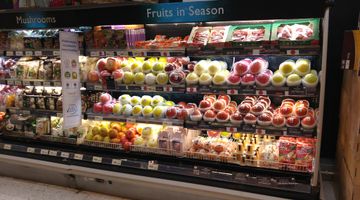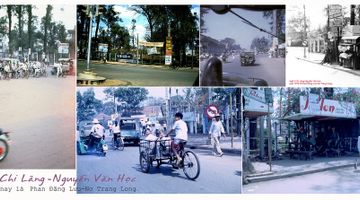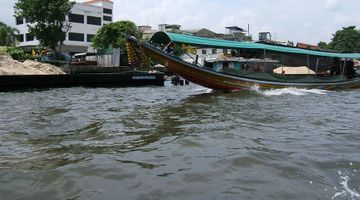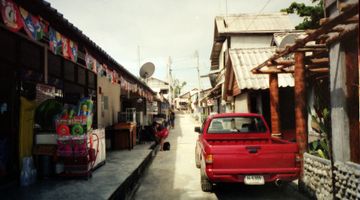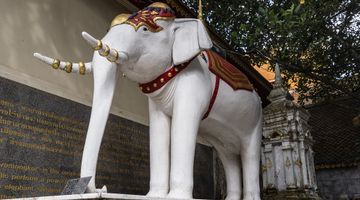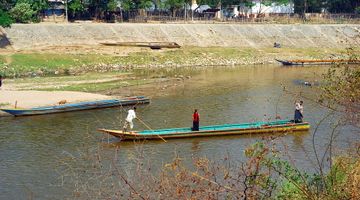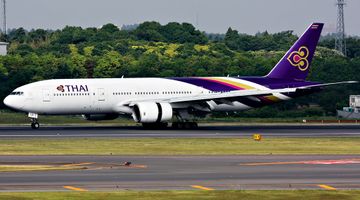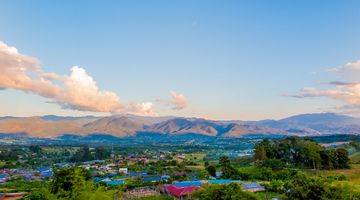Thailand Food Survival Guide – What, Where, and How to Eat
So, what to eat in Thailand? Food in Thailand conjures up wistful thoughts of delicious smells wafting from steaming woks, generous helpings of flavoursome, hot curries, slippery noodles, tropical fruit and marinated kebabs barbequing on hot, fiery coals. The food in Thailand is a wonderful assault on the palate and the secret to traditional Thai food is a careful balance of five distinct flavours; namely, spicy, salty, bitter, sweet and sour. Catering for a wide range of diets and wallet sizes, the food in Thailand ranges from scrumptious, cheap street food to fine dining on rooftops. Vegetarians will also have no difficulty at all in finding numerous options on menus or inside the steaming dishes on street corners. Be sure to specify ‘Mangswirat’ (vegetarian) and you’ll be pointed or herded in the right direction.
It’s impossible to narrow down Thai cuisine into the top ten local dishes that travellers should try during their stay in the kingdom, but here we are attempting the impossible anyway!
1. Tom Yum Goong
This savoury, hot and sour Thai soup that is generally served with shrimp needs to be right near the top of any tourist’s Thai must-eat list. The spicy, clear broth is filled with flavours of fresh chillies, lime juice, lemongrass, galangal and delicious, meaty prawns. The combination of all the different and unique flavours make this spicy soup a popular Thai dish across the world.
2. Tom Kha Gai
Another popular Thai soup, Tom Kha Gai is a creamy concoction of coconut milk, chicken, mushrooms, galangal, coriander, fish sauce and fresh lime juice. The heavenly smell of this broth will have you ordering two helpings before taking the first sip. Hearty, nutritious and affordable, this soup checks all the boxes.
3. Geng Kheaw Wan (green curry)
Probably the most well-known, Thai curry, Geng Kheaw Wan, or commonly known the world over as Green Curry, is hot, spicy and delicious for those who enjoy a fiery curried taste. It is generally possible to order this curry with chicken, shrimp or with only veggies and so it’s a great option for vegans and vegetarians. Other common ingredients include coconut milk, lime, cauliflower, basil leaves, kaffir lime leaves and various seasonal vegetables if the vegetarian option is requested.
4. Pad Thai
A Thai masterpiece, arguably the national dish and undoubtedly many a local and tourists favourite dish, Pad Thai is raved about across the world and all with good reason too. On the menu of pretty much every Thai restaurant and sold in towering mounds from stationary street stalls on every second street corner, no tourist could possibly leave the country without sampling this noodle dish at least once. Rice noodles are stir-fried in a wok with a host of ingredients, such as green onions, bean sprouts, garlic, pepper, fish sauce, sugar, tofu, scrambled egg and peanuts. Vegetarian and shrimp options are usually always available and once the dish is ready to devour it is encouraged to squeeze a bit of fresh lime on top as well as ground nuts, chilli flakes and vinegar.
5. Khao Pad
This is the classic Thai-style fried rice that most travellers usually order as one of their first meals in Thailand. Affordable, delicious and far less spicy than most traditional Thai dishes, this meal is easy eating. Various options include vegetarian, chicken, crab or shrimp and the dish is usually made with onions, garlic, tomatoes and egg that gets scrambled up with the rest of the deliciousness.
6. Khao Soi
This Myanmar-inspired noodle soup is often enjoyed in Northern Thailand and is a wonderful soup-like dish consisting of deep-friend crispy egg noodles, boiled egg noodles, shallots, yellow curry sauce, turmeric, coconut milk, greens, limes and chilies. Meat is often added to the smoky, coconutty broth and ladled generously into deep bowls. The happy sounds of slurping noodles often accompany any dish of Khao Soi.
7. Som Tam
Som Tam is without a doubt Thailand’s most famous salad. The main ingredient is papaya with generous servings of garlic, chillies, fish sauce, peanuts, tamarind juice, dried shrimp, tomatoes and string beans thrown in for good measure. Lime juice, sugar cane paste, and dried shrimp are added too; and the sweet, spicy and salty flavours combine harmoniously with the crisp crunch of the papaya. Addictive and unusual, Som Tam is a delight to the senses.
8. Gai Yang (barbequed chicken)
Frequently seen in the sticky hands of young children on the way to and from school on the back of their parent’s motorbike, Gai Yang is a firm staple of the locals. This Thai-style grilled chicken is a classic street food item in Thailand and tourists will have no problem locating this meal wherever they are in the country. The crispy, golden chicken skin is generously coated in a charred marinade of fish sauce, coriander root, spices, herbs and sugar and after being butterflied is usually threaded onto kebab skewers and grilled over charcoal.
9. Khanom Jeen
Slippery, soft noodles that are made from fermented rice is the main ingredient of Khanom Jeen, a popular dish that originated in Nakhon Si Thammarat. This mild-tasting, silky noodle dish is served with a big spoon of various curry options, fish sauce, nuts and topped off with fresh cucumber slices and raw cabbage. Ladled out from giant pots at markets and sold at high-end restaurants, this dish is versatile and tasty.
10. Gai Pad Med Mamuang
This dish is essentially chunks of tender chicken with cashew nuts, often served with rice and topped with green onions and chilies. This chicken dish bursts with flavour and fits well within the comfort zone of most travellers hesitant to jump right into the Thai food scene.
Food prices in Thailand
Food prices in Thailand are fortunately very very low compared to other parts of the world and even the rest of Asia. It is easy for even those on a shoe-string budget to eat well and to eat often. Finding tasty, hearty grub on the street will generally cost you around THB 20 to THB 50 for a meal whereas inexpensive restaurants generally have meals from THB 60 to THB 100. The more fancy, fine-dining restaurants are obviously much pricier and meals will generally start from THB 300 and work steadily upwards. Eating Western food in Thailand will also cost you more than eating traditional, local dishes and travellers can expect to pay around THB 150 for a burger or pasta in a mid-range restaurant.
Thailand food security
Eating on the streets of Thailand is a special and unmissable experience for any traveller and while enjoyable and fun for many, the infamous ‘Thai Tummy’ cannot go unmentioned. Thailand food security is somewhat of a hit and miss. Due to the sub-standard level of hygiene and cleanliness in many of the street stalls, travellers occasionally get stomach cramps and bouts of diarrhoea after eating the scrumptious fare served up on street corners and at bustling markets. While this is seldom enough to deter the adventurous traveller (especially those on a budget) it makes sense to avoid certain ingredients when gobbling down noodles and rice from hot polystyrene containers. Meat that has been standing still can occasionally be a culprit as well as fish and seafood. For those wanting to be extra careful or with sensitive stomachs, eating strictly vegetarian could save you a tummy ache or two. Only drinking bottled water and avoiding ice is also recommended.
Where to look for the best Thai food
Thai food culture can be observed from a wide avenue of vantage points for tourists who enjoy cultural submersion and long to eat like a local. From lively markets filled with tropical fruit-laden tables and the sizzling sound of noodles cooking, to fragrant heaps of rice and curries being sold from food vendors on street corners, all the way to fine-dining atop a skyscraper in Bangkok, Thailand has it all. Travelers would do well to try them all to get a full and rich food experience while in the country. Air-conned restaurants, beach shacks on the sand, rooftop bars, open-aired markets and food courts in malls are all unmissable food opportunities for visitors with grumbling tummies. Be sure to keep a lookout for mu ka ta restaurants, a fusion of a Chinese hot-pot and Korean barbecue, where customers cook their own food at their table for a fun and unique dining experience.
Learning to cook Thai food
What could be better than eating Thai food? Cooking Thai food perhaps? And where better to learn than in the country itself. Thailand offers a variety of cooking class opportunities for those wanting to take home more than coconut bowls and elephant pants when they leave the country. In the more popular destinations such as Bangkok, Phuket and Chiang Mai, visitors will be spoiled for choice in deciding where they’ll learn the art of Thai cuisine.
1. Bangkok
For travellers exploring the capital, Chef LeeZ Thai Cooking Class in Bangkok is an excellent way to learn all about Thai food and the preparation thereof. 10am until 2pm an 8-people cooking class with the charming Chef LeeZ will cost you THB 2,200. Private or more intimate classes are also offered.
2. Phuket
Phuket Thai Cookery School is another option for those who are tiring of sunburn and salt while in sunny Phuket, and this cooking school with a superb view comes highly recommended. A crash course in Thai cooking at Phuket Thai Cookery School will set you back THB 2,900 and includes all transfers, a visit to a local market, basic carving, all ingredients, recipe cards upon leaving and even a certificate.
3. Chiang Mai
Thai Farm Cooking School in Chiang Mai gets raving reviews from those who have learned to whip up a scrumptious bowl of Thai curry all from the fresh ingredients picked on the organic farm. The day starts at around 8:30 and ends at around 5pm with all transport to and from the cooking school, as well as a visit to a local market, included in the THB 1,500 fee.
Cooking schools managed by famous restaurants
Thailand also has several famous local cooking schools that are supported by pricy, high-end restaurants on site. Green Garden School in Bangkok is a great example of this and well worth a visit for those who crave authentic, excellent Thai delicacies and cuisine. Situated on Soi Samsen 5, this restaurant and cooking school is open from 9am to 11pm.
Pum Thai Cooking School and Restaurant in Patong, Phuket is another school-restaurant fusion that travellers will no doubt enjoy and appreciate. Located on Ratuthit Song Roi Pi Road, Pum Thai Cooking School welcomes cooking students and restaurant customers from 11am until 9pm.
Top tips to enjoy Thai food
Enjoying Thai food to its fullest can come with its fair share of challenges but there are several top tips to eating Thai food that all travellers can take advantage of.
-
Always order a side of rice when ordering a curry as it often isn’t included in the price.
-
Learn a teensy bit of Thai so that ordering food is an easier affair. As mentioned earlier on, vegetarian food is ‘mangswirat’, chicken is ‘gai’; pork is ‘moo’ and rice is ‘khao’.
-
Avoid ice and unbottled water even in restaurants in case the water is unfiltered.
-
Try to order street food from street vendors that are very busy to avoid eating food that has been left for long periods of time in the heat or exposed to flies.
-
Food is eaten with a spoon and fork and knives are very seldom on offer. Use your fork to scoop food onto the spoon and then put it into your mouth. Use the side of your spoon to cut any big pieces of food.
-
Be venturesome with your ordering and veer away from Western food so that you can experience new tastes and local, traditional dishes.
-
Be patient as large tables of guests seldom receive all their meals at the same time. Be kind. Be adventurous with local dishes. Come hungry. Leave happy.
